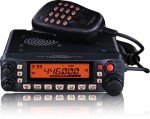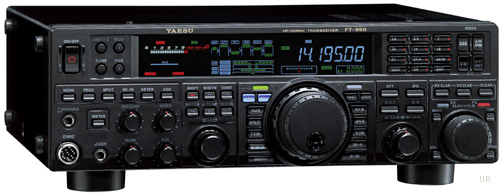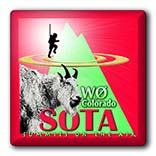Author Archive
 Mixed Signals from Yaesu
Mixed Signals from Yaesu
This just in from the Things That Make You Go Hmmm Department: the amateur radio portion of Yaesu splits from Mother Motorola while the land mobile portion stays. This is right on top of an announcement that Yaesu will pursue a digital amateur radio offering based on land mobile technology (i.e., definitely not D-STAR).
The K0KDS blog has a post about the split, so go there for the full story. The ARRL has this news item about the organizational change. Here’s the paper that Yaesu published about their move into digital technology for amateur radio.
73, Bob K0NR
 Don’t Get Stuck On 2 Meters
Don’t Get Stuck On 2 Meters
 When I first got started in amateur radio (many years ago), one of the engineers that I was working with at a summer job told me “Don’t get stuck on 2 Meter FM”. At the time I was a college student and felt lucky enough to have 1) found time to pass my Novice exam, including Morse Code test, 2) found time to travel 150 miles to the regional FCC office and pass my Technician exam, and 3) scraped up enough money to buy a basic 2 Meter FM mobile rig. I was in Technician ham heaven, playing around on 2 Meter FM, both simplex and repeaters. Oh, and we had this cool thing called autopatch that let you make actual phone calls from your car. I really wasn’t worried about getting “stuck on two”.
When I first got started in amateur radio (many years ago), one of the engineers that I was working with at a summer job told me “Don’t get stuck on 2 Meter FM”. At the time I was a college student and felt lucky enough to have 1) found time to pass my Novice exam, including Morse Code test, 2) found time to travel 150 miles to the regional FCC office and pass my Technician exam, and 3) scraped up enough money to buy a basic 2 Meter FM mobile rig. I was in Technician ham heaven, playing around on 2 Meter FM, both simplex and repeaters. Oh, and we had this cool thing called autopatch that let you make actual phone calls from your car. I really wasn’t worried about getting “stuck on two”.
Even though my discussions with this Old Fart Experienced Radio Amateur revealed that he didn’t see 2 Meter FM as Real Ham Radio, I could see that he had a point. Two meter FM is only small part of the ham radio universe and it would be easy to just hang out there and miss out on a lot of other things. I was reminded of this recently by K3NG’s post: Things I Wish I Knew When I Was A Young Radio Artisan. I agree with most of his comments with the exception of this one:
Don’t get your start on 2 meter repeaters.
This took me back to the comments from the Experienced Radio Amateur from years ago. I get the point — starting out on 2 Meter FM and Repeaters can give you a limited view of ham radio — but I see it as the perfect platform for getting started. Here’s what is working in my area with new Techs: get them started with a dualband FM rig (usually an HT) so they have some on-the-air success. This also puts them in touch with the local ham community, where we not-so-subtlely expose them to other bands, modes and activities. They hear the other guys talking on the repeater about working DX on 10 Meters and start thinking about how to pursue that as a Tech. From there, it just expands out to all kinds of bands and modes.
Just for the record, I guess I did follow the advice of the Experienced Radio Amateur and managed to not “get stuck on two” (i.e., I’ve worked all of the bands from 80M to 10 GHz, earning WAS, WAC, DXCC and VUCC.)
73, Bob K0NR
 ARRL 10 Meter Contest
ARRL 10 Meter Contest
 Usually I don’t focus on the ARRL 10 Meter contest, especially when the solar activity has been so low. However, band conditions have really picked up and 10 Meters is alive and kicking. We have quite a few new Technicians that are discovering the wonder of worldwide HF propagation with even a modest station.
Usually I don’t focus on the ARRL 10 Meter contest, especially when the solar activity has been so low. However, band conditions have really picked up and 10 Meters is alive and kicking. We have quite a few new Technicians that are discovering the wonder of worldwide HF propagation with even a modest station.
I decided to operate from our cabin up in the mountains. I haven’t been happy with the performance of my trap dipole on 10 Meters, so I wanted to try something different. I pulled a twinlead J-pole antenna out of the basement and strung it up in a tall pine tree. This basically gave me a 1/2-wave vertical on 10 Meters and I was pleased with the performance.
I had a great time with the 10 Meter contest, operating for part of Saturday and Sunday.
You’ve got to like a contest that has:
- Only one band, so no fretting about which bands to focus on
- CW or SSB, take your pick or do both
- Lots of DX
- Work anybody anywhere
- You can sleep at night and not miss anything
I mostly searched and pounced around but did manage a few runs with my mighty wire antenna. Not being a real CW operator, I did decide that I would push myself to make 10 CW contacts. Most of those guys are going way too fast for me, but I got it done.
ARRL10M Score Summary Sheet
Start Date : 2011-12-10
Band Mode QSOs Pts Cty
28 CW 10 40 8
28 USB 254 508 72
Total 264 548 80Score : 43,840
73, Bob K0NR
 Summits On the Air Taking Off in Colorado
Summits On the Air Taking Off in Colorado
 The Summits On The Air (SOTA) program was launched in Europe in 2002 but is just now making its way to the United States. Recently, there has been a surge of activity in Colorado as the program gains traction here.
The Summits On The Air (SOTA) program was launched in Europe in 2002 but is just now making its way to the United States. Recently, there has been a surge of activity in Colorado as the program gains traction here.
The basic concept of SOTA is an award program that rewards the radio operators that activate summits and the radio operators that chase summits. For those of us that enjoy the mountains and enjoy ham radio, this is a great fit. I won’t go into all of the rules here (Warning: There Are Lots of Them), so check out the SOTA web site for the complete details.
Steve WG0AT (World Famous Alpha Goat) just published another one of his Rooster and Peanut videos that capture his recent activation of Mount Herman. I managed to work Steve on 2 Meters and I make a cameo appearance in his video below as I make my first official SOTA contact.
Steve has been activating SOTA summits for a while now and others are joining in. Here’s a video from Pikes Peak with Mike, KD9KC and Ron,WT5RZ on North American Summits On the Air weekend.
Recently, Jerry KD0BIK succumbed to the SOTA addiction, activating Mount Herman and Green Mountain (click on the mountain names to see his blog postings). Chris NW5W has also been active…check out his web site here.
There are numerous SOTA videos on youtube from all over the world.
The SOTAWatch web site is dedicated to posting future SOTA operating plans (Alerts) and SOTA activations in progress (Spots). The North American SOTA Yahoo! Group is another great source of information.
See you on a summit soon.
73, Bob K0NR
 A Pretty Good List From K3NG
A Pretty Good List From K3NG
K3NG reposted one of his classic articles Things I Wish I Knew When I Was A Young Radio Artisan. Here’s a few items from the list:
With antennas, it’s not about the feet and inches (or meters), think in terms of wavelength.
Don’t worry about the orientation of a dipole when it’s less than a half wavelength above ground.
When the bands are open any goofy antenna will make contacts. People will think this makes a goofy little antenna a good antenna. Not so.
I don’t agree with everything on the list but it is still worth reading.
73, Bob K0NR
 What’s a Country?
What’s a Country?
 Recently on Google Plus there was a discussion of what qualifies as a separate country in the amateur radio world. The confusion point was that Alaska was showing up in logging software as a “country”. It turns out is is both a country and a state.
Recently on Google Plus there was a discussion of what qualifies as a separate country in the amateur radio world. The confusion point was that Alaska was showing up in logging software as a “country”. It turns out is is both a country and a state.
The generally accepted countries list is established by the DXCC award. Actually, the correct term is entities, not countries, but in normal conversation people seem to use countries. DXCC stands for DX Century Club, with the minimum award being 100 (Century) countries.
Back to the issue of Alaska — it clearly is one of the 50 United States, so you’ll need to work it to achieve Worked All States (WAS). It is geographically separated from the lower 48 states, so it is also considered a separate country. The same is true for Hawaii — counts as a state and a country.
To find out what counts as a country, you need to study the DXCC Country List. A peek at this list reveals that these US possessions are all considered separate countries for DXCC purposes:
K,W,N, AA-AK# United States of America
KG4# Guantanamo Bay
KH0# Mariana Is.
KH1# Baker & Howland Is.
KH2#* Guam
KH3#* Johnston I.
KH4# Midway I.
KH5# Palmyra & Jarvis Is.
KH5K# Kingman Reef
KH6,7#* Hawaii
KH7K# Kure I.
KH8#* American Samoa
KH8#* Swains I.
KH9# Wake I.
KL,AL,NL, WL#* Alaska
KP1# Navassa I.
KP2#* Virgin Is.
KP3,4#* Puerto Rico
KP5# Desecheo I.
So there are 19 countries, just inside US territory.
The DXCC Rules that define a country are complex, a mix of geographical and political considerations. I won’t even try to explain it here. Be aware that as the political boundaries change, countries can be added or deleted from the list.
73, Bob K0NR
 This Spewed Out of the Internet #20
This Spewed Out of the Internet #20
 There’s lots of information spewing forth from the interwebznet. Here are a few items of interest.
There’s lots of information spewing forth from the interwebznet. Here are a few items of interest.
The amateur radio community is buzzing with excitement from the excellent propagation on the HF bands during the CQ Worldwide DX Contest last weekend. For example, see the radio-sport.net post or my post.
One of our local Boy Scouts passed his Technician exam on the Saturday before the contest, showed up in the FCC database on Friday and was working DX on 10 Meters on Saturday. He managed to snag some good ones, including Australia.
The ARRL is reporting that Logbook of the World is having trouble keeping up with the influx of radio logs. Although it would be nice if they could put a little more compute horsepower on the system, I think it is great that LoTW is seeing this kind of volume.
The Interstate Highway Rest Area Society is making a pitch to encourage hams to monitor 146.52 MHz when mobile. I usually try to do this and every once in a while I will stumble onto a great QSO that way. This group is also promoting ham radio activation of highway rest areas. Yes, really, it is not a hoax.
73, Bob K0NR












